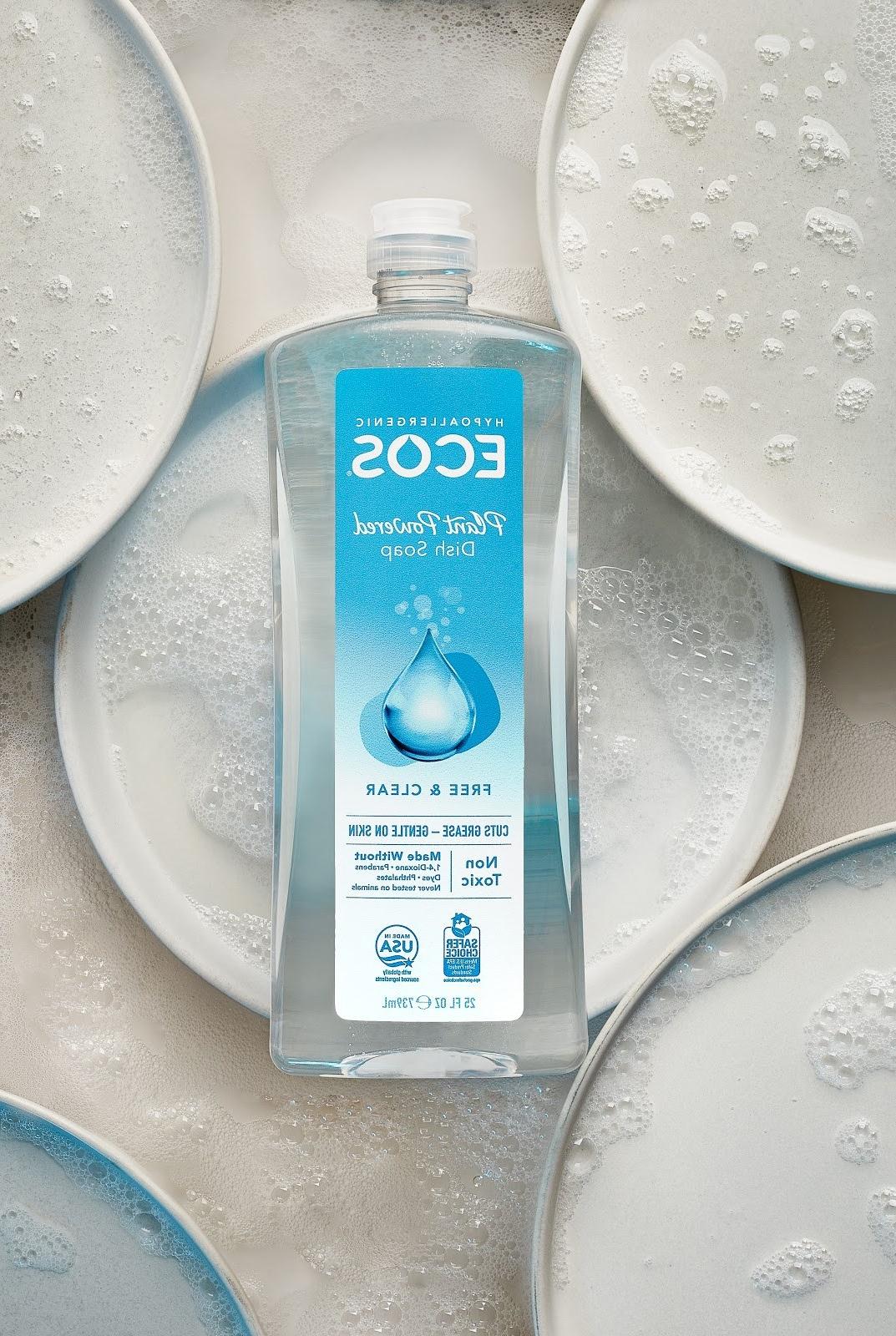Detox Your Home: 5 common toxins found in dish soaps
7分钟阅读

洗盘子. It’s something you probably haven’t spent much time thinking about, but it’s a chore performed daily in almost every home. It starts with a squeeze of dish soap, a few swishes of the sponge, followed by a water rinse. But that conventional dish soap you’ve been using? It doesn’t all wash off. 事实上, it leaves toxic chemical residues behind on your dishes and glasses that pose significant health hazards over the long-term.
Failing Grades for Conventional Dish Soaps
The Environmental Working Group (EWG) evaluated 326 dish soaps and assigned each one a hazard rating ranging from A to F, A是最安全的, F是毒性最强的. 十大彩票网赌平台 65% got a D or an F, including many of the big conventional dish soap brands you might be familiar with. Unfortunately, there are no national requirements to list ingredients on cleaning product labels. Cleaning product manufacturers can use almost any ingredient they want in their formulations, including those that are known to cause harm. If ingredients ARE listed, they can often be vague and misleading. So, how do you identify harmful, toxic chemicals if you don’t have a team of staff scientists to help? 请继续往下读.
了解你的清洁
Smarter dishwashing starts with recognizing the harmful toxic ingredients that can be left behind on your dishes and/or ingested or absorbed by your skin. 以下是要避免的:
- dea, mea, tea – (a.k.a. Ethanolamines) – These known carcinogens are still commonly found in household products like dish soap, 洗衣粉, and all-purpose cleaners. 一些, 如可卡因DEA, are used as foaming agents; others are used as surfactants and emulsifiers to make it easier for soap to mix with water. 1,4 -二恶烷 – A known carcinogen and neurotoxin, 它会导致皮肤, 眼睛, 鼻子, 喉咙, 肺部刺激, 睡意, 头痛和眩晕, 即使是少量的. Look for ingredients with “eth” like “laureth” and “ethoxy,” as well as “polyethylene glycol” or “PEG” ingredients.
- 染料 – Often added for their aesthetic appeal on your counter, 染料 in dish soap can contain irritating compounds such as benzidine, 一种已知致癌物. They have also been linked to many mood disorders, like hyperactivity. Commonly found in goods sold in America, many 染料 are actually banned in other countries because of health concerns. Most 染料 are listed by their color name, such as “FD&C蓝色”或“黄色-5”.”
- 甲醛 (and 甲醛 donors such as DMDM hydantoin (DMDMH)) – Used as a preservative, it’s a very toxic respiratory irritant and known carcinogen that can be absorbed by the skin. 很难发现, but some of the most common chemical names to watch for are bronopol, diazolidinyl尿素, disteardimonium hectoride, 咪唑烷基脲, 亚甲基乙二醇, nitromethylidynetrimethanol, 和quaternium-15.
- 邻苯二甲酸盐 – These known endocrine disruptors are linked to developmental, 生殖, 大脑, 免疫, 还有其他问题. (http://www.niehs.nih.gov/health/topics/agents/endocrine/index.cfmTypically found in synthetic fragrances, they interfere with hormones, which are essential to almost every biological process and enable the body to function.
洗碗101
这里有一些聪明的, simple ways to clean your dirty dishes safely that are also kinder to people and the planet.
- Look for products that are certified 安全的选择 由美国.S. 环境保护署. It’s a great way to find dish soaps and other cleaning products that use the safest ingredients in their class, meet high standards for performance, and avoid potentially toxic ingredients.
- Seek out dish soaps that are dye-free. 染料 aren’t necessary for a product to work well.
- Clean your sink or dish tub daily! Multiple studies have found that kitchen sinks are some of the dirtiest places in your home, harboring more germs – like E.coli – than your toilet!
- Spend less time at the sink and save water by pre-soaking your dishes. Scrape off any leftover food first, then soak dishes in a sink or a dish tub with just enough warm, 用肥皂水覆盖. Follow with a quick scrub and rinse to make washing up quicker while avoiding excess water consumption.
- Sanitize your sponge and scrub brushes. A five-minute soak in white vinegar for brushes and one to two minutes in the microwave for sponges will do the trick (make sure they’re very wet first!). 定期更换. Or better yet, use natural fiber dishrags that can be laundered. Rotate with a clean rag daily to avoid bacteria build-up.

The Safer Way To Do Dishes
Looking for a safer alternative to conventional dish soap? ECOS® Dishmate® dish soaps and high-performance ECOS® Wave® Dishwasher Gel are 安全的选择 certified. 不含dea, 量, 茶, 1,4二氧六环, 染料, 甲醛, 或邻苯二甲酸盐, they safely tackle grease and grime, 对皮肤温和, and are greywater safe.
ECOS is so committed to using safer ingredients that we made a list of 500 known toxins – a.k.a. “the Nasties” – that we promise never to use in our products. Check out the list here: 它们. We hope it helps guide you to products that are better for you, your home and our planet.
